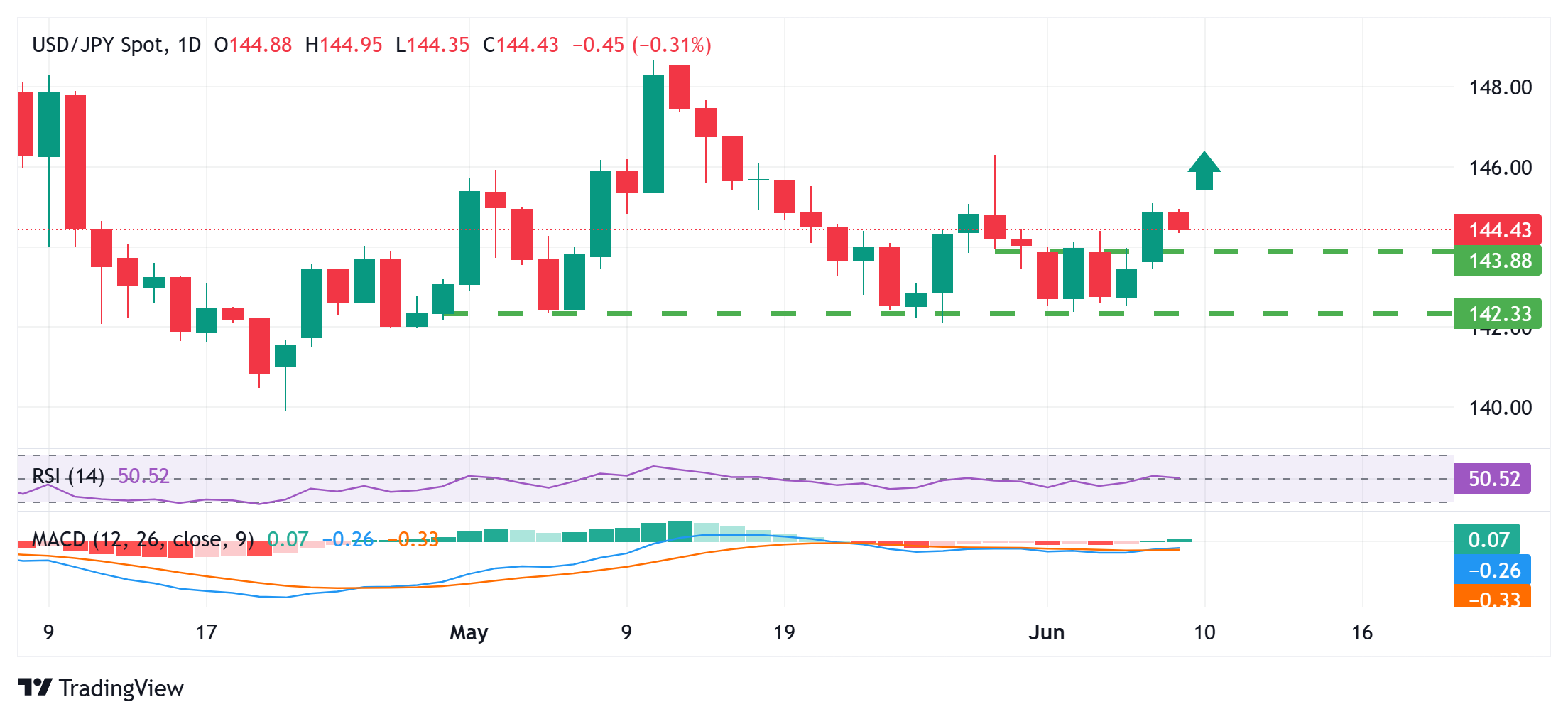Japanese Yen remains on the front foot; USD/JPY struggles below mid-144.00s

- The Japanese Yen attracts fresh buyers on Monday and snaps a two-day losing streak.
- An upward revision of Japan’s Q1 GDP reaffirms BoJ rate hike bets and boosts the JPY.
- The emergence of some USD selling exerts additional downward pressure on USD/JPY.
The Japanese Yen (JPY) remains on the front foot through the Asian session on Monday amid the growing acceptance that the Bank of Japan (BoJ) will continue raising interest rates. The bets were reaffirmed by an upward revision of Japan’s Q1 GDP print. Adding to this, a modest US Dollar (USD) downtick drags the USD/JPY pair away from over a one-week high touched on Friday.
The JPY bulls, however, seem reluctant to place aggressive bets and might opt to wait on the sidelines ahead of the US-China trade talks in London later today. Moreover, Friday’s stronger-than-expected US jobs data dampened hopes for imminent rate cuts by the pair back towards the 143.50-143.40 area en route to the 143.00 mark and the next relevant support near the 142.70-142.65 horizontal zone. The latter should act as a pivotal point, which, if broken decisively, will set the stage for the resumption of the recent downfall from the May monthly swing high.
Japanese Yen FAQs
The Japanese Yen (JPY) is one of the world’s most traded currencies. Its value is broadly determined by the performance of the Japanese economy, but more specifically by the Bank of Japan’s policy, the differential between Japanese and US bond yields, or risk sentiment among traders, among other factors.
One of the Bank of Japan’s mandates is currency control, so its moves are key for the Yen. The BoJ has directly intervened in currency markets sometimes, generally to lower the value of the Yen, although it refrains from doing it often due to political concerns of its main trading partners. The BoJ ultra-loose monetary policy between 2013 and 2024 caused the Yen to depreciate against its main currency peers due to an increasing policy divergence between the Bank of Japan and other main central banks. More recently, the gradually unwinding of this ultra-loose policy has given some support to the Yen.
Over the last decade, the BoJ’s stance of sticking to ultra-loose monetary policy has led to a widening policy divergence with other central banks, particularly with the US Federal Reserve. This supported a widening of the differential between the 10-year US and Japanese bonds, which favored the US Dollar against the Japanese Yen. The BoJ decision in 2024 to gradually abandon the ultra-loose policy, coupled with interest-rate cuts in other major central banks, is narrowing this differential.
The Japanese Yen is often seen as a safe-haven investment. This means that in times of market stress, investors are more likely to put their money in the Japanese currency due to its supposed reliability and stability. Turbulent times are likely to strengthen the Yen’s value against other currencies seen as more risky to invest in.
